god morgen
This talk is about OpenREM - software to help us physicists do a better job
Hint: press the space bar
See reveal.js for details of the presentation format
OpenREM: Radiation Exposure Monitoring for physicists
Ed McDonagh, The Royal Marsden
MedFys 2015 conference, Kvitfjell, Norway. 2nd-4th February
Why automated dose monitoring?
Sample sizes
Level of detail
Accuracy
Because we can!
Why create my own software?
Data were available
Tools were available
- David Clunie's DoseUtility
- Python's pydicom
- Bash scripting, XlsxWriter...
Nothing on the market did what I needed
Freedom!
Design criteria
Harvest the dose related data that I want
i.e. everything I can get my hands on...
Customisable
Low cost
Free
Documented
Compliant with data protection law
Data protection requirements
No patient identifiable data is retained
Not required for
- population dose monitoring
- optimisation
Accession number is used for
- individual patient dose investigations
Patient tracking is of interest for interventional imaging - use accession numbers on a case-by-case basis?
What I didn't want to see...
(meaningless) Effective dose calculations
Cumulative dose tracking
Dashboards for referring physicians and justifying radiologists
Solution:
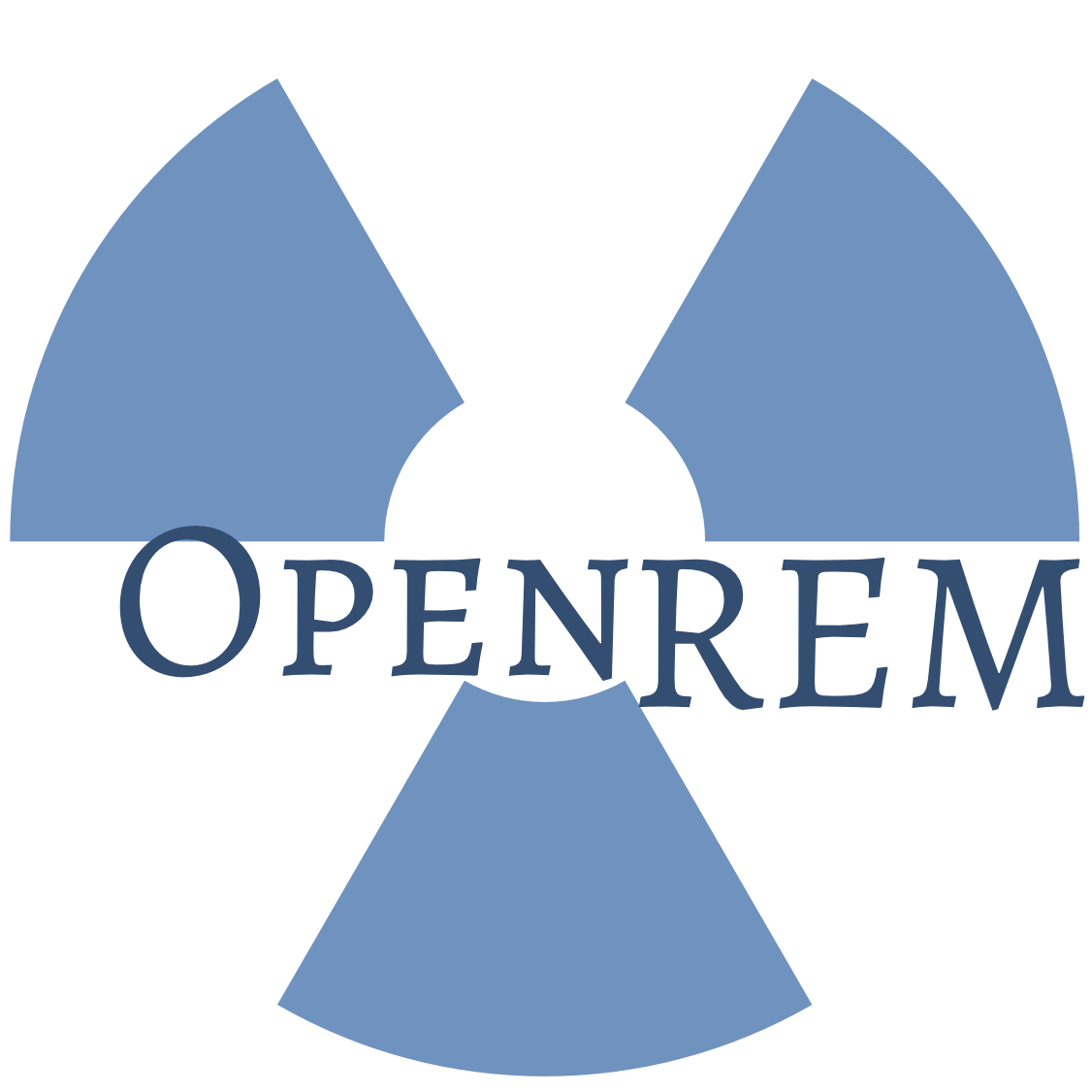
Open source - GPLv3 licence
Hosted at Bitbucket.org in a git repository
Python, Django, pydicom, XlsxWriter, Celery and RabbitMQ


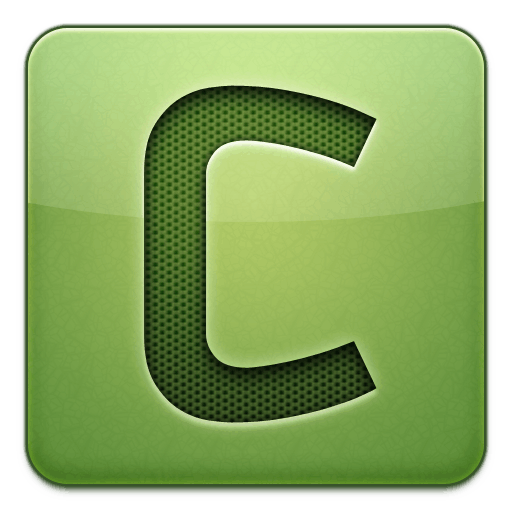

Sources of dose information:
Radiation dose structured reports
- CT
- Fluoroscopy
- Others...
Mammography images
Radiography images
Philips CT dose summary images
CSV files containing height and weight
Planned sources of dose information
Toshiba CT dose summary images
Siemens Arcadis Varic fluoroscopy structured report
Importing data
No DICOM C-Store (yet)
- Use another DICOM listener, eg Conquest
- Or copy as files
Import on the command line:
openrem_rdsr.py structuredreport.dcm
openrem_mg.py mammographyimage.dcm
openrem_dx.py radiographyimage.dcm
openrem_ctphilips.py ctimage.dcm
Automate with a shell script/Conquest
Enough words!
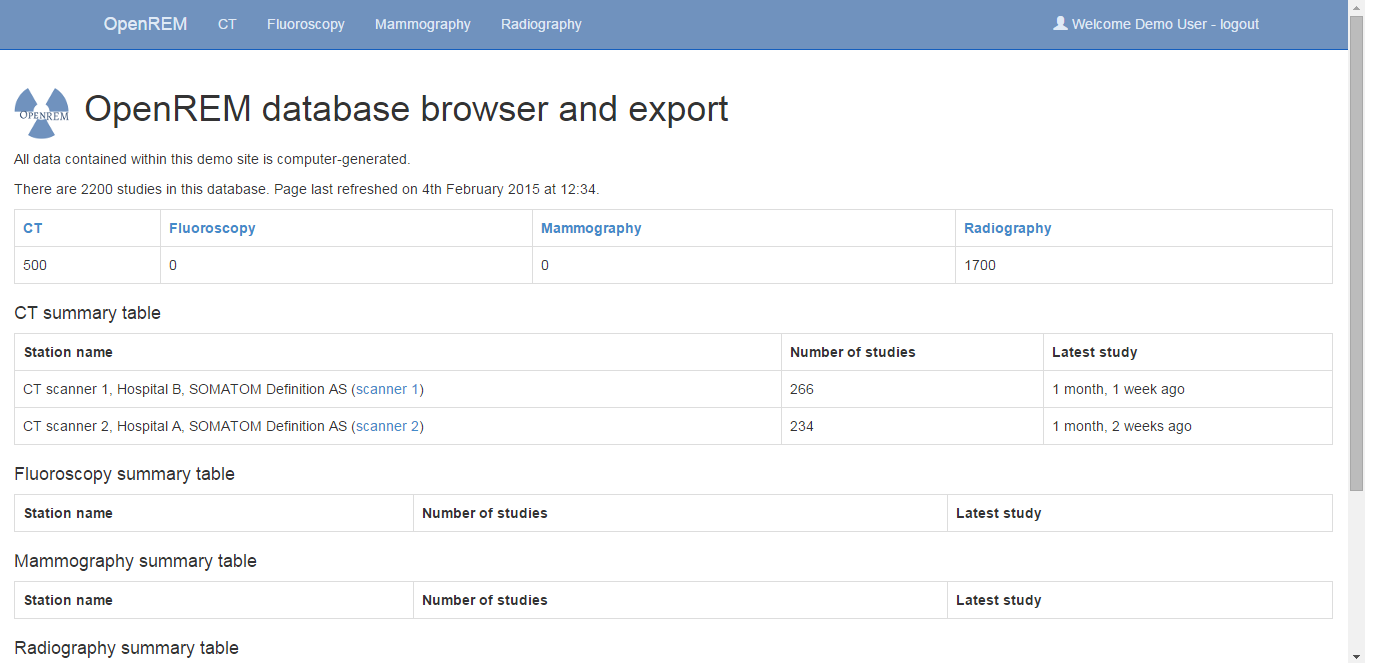
Authorisation
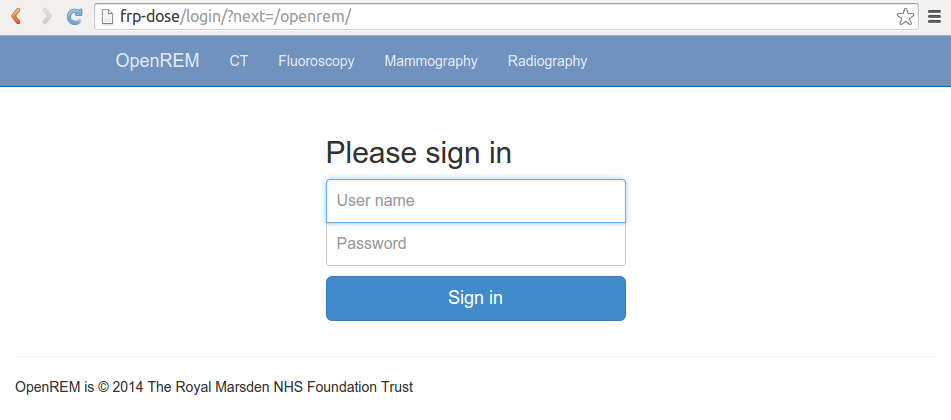
View group: Can only browse data
Export group: Can also export data to spreadsheets
Admin group: Can also import height and weight data and delete studies
Filtering study list
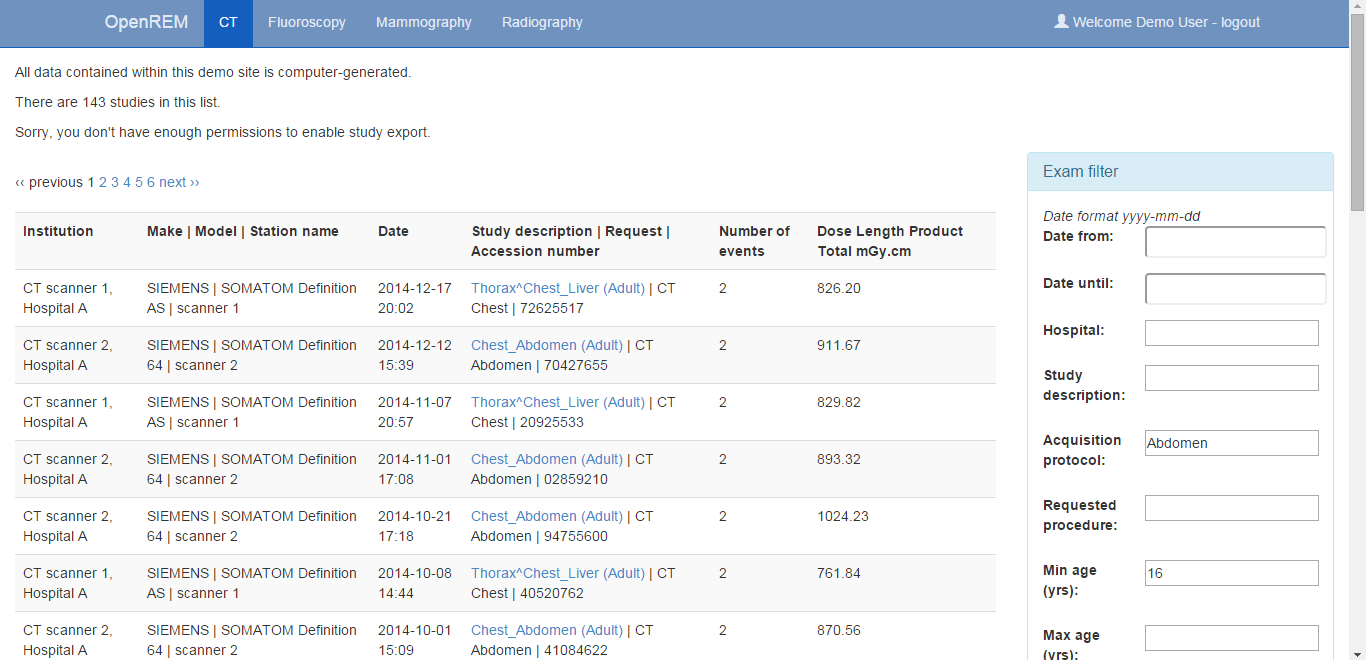
Viewing study details
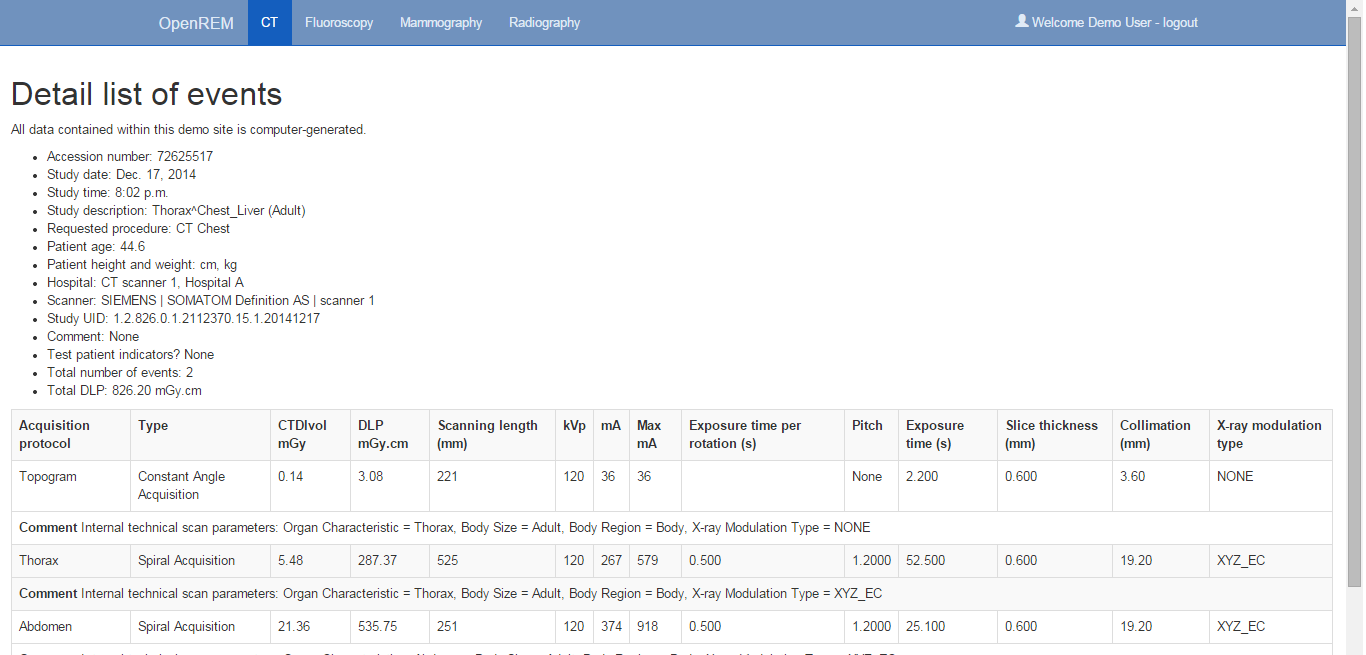
Uploading csv file with patient size information
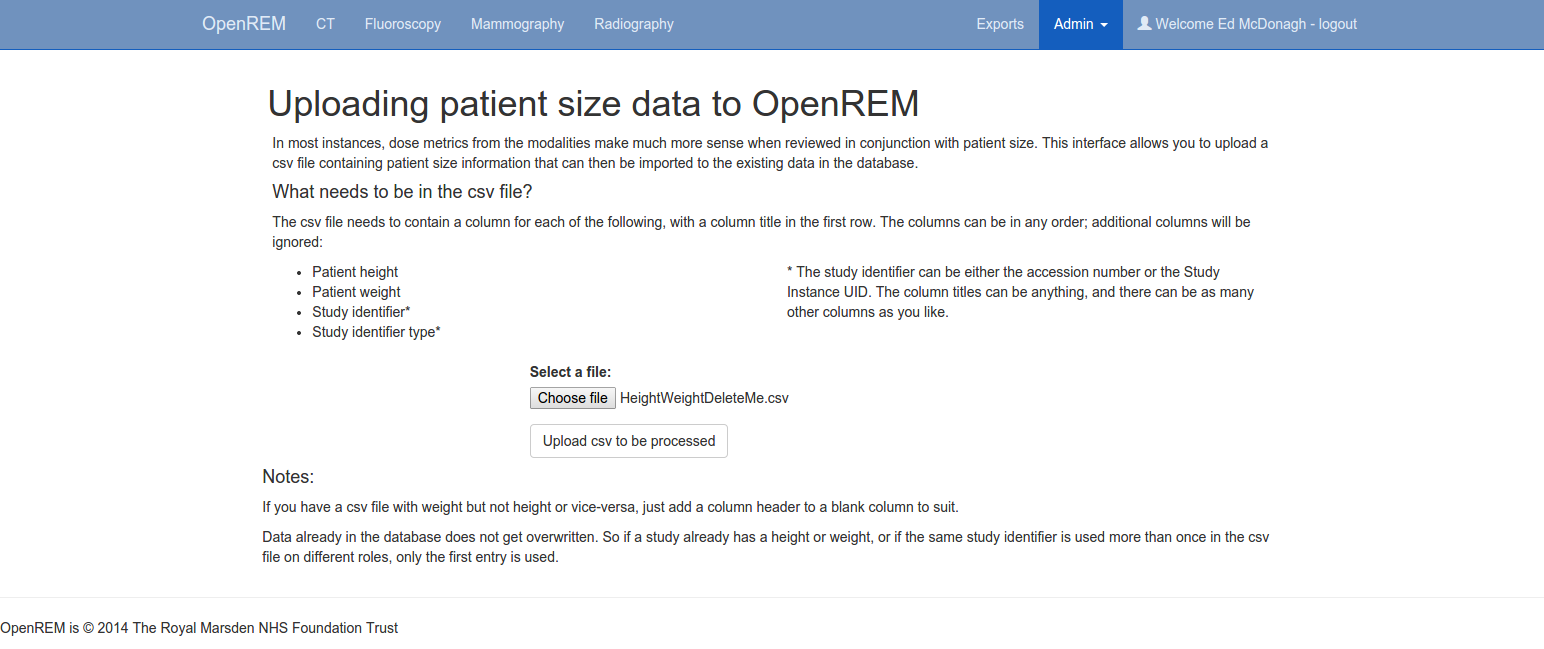
Choosing column headings for import
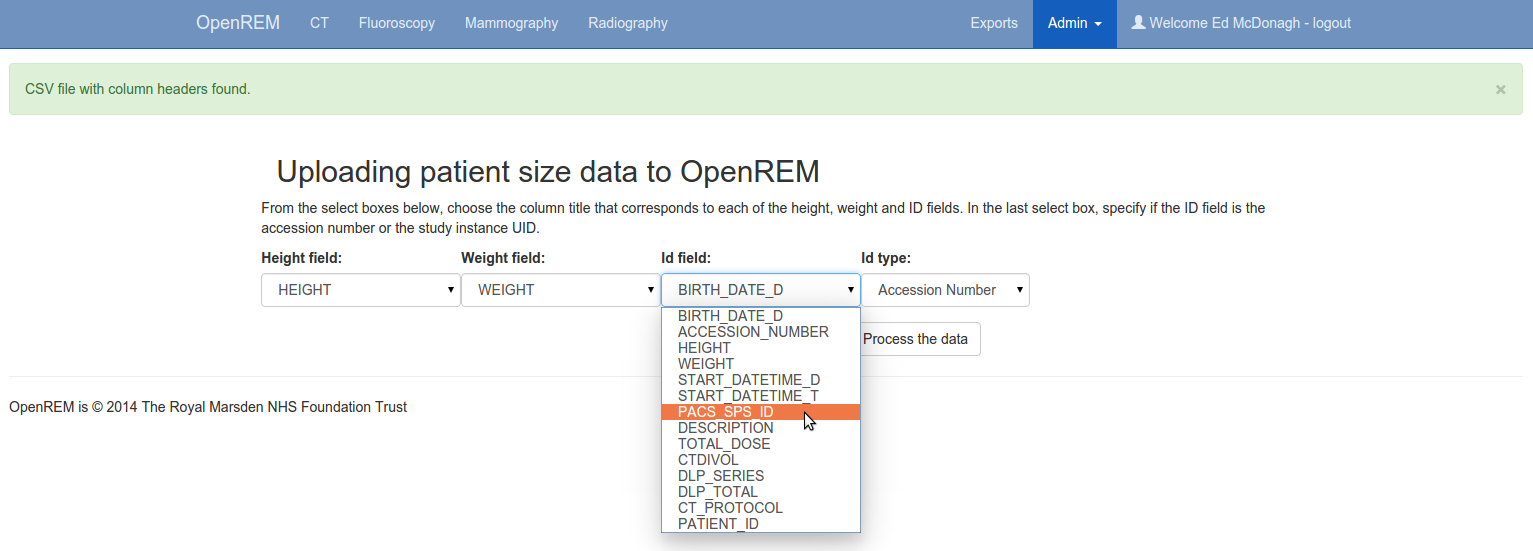
Exporting data to spreadsheets
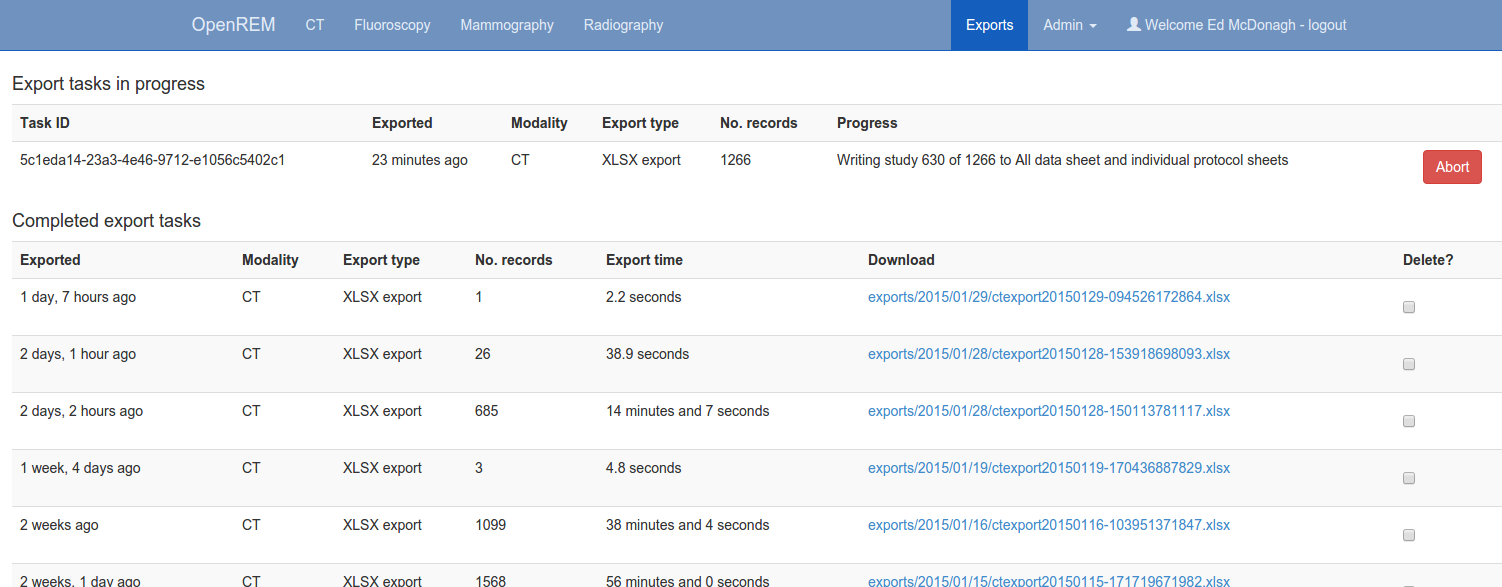
Data exports
Images of excel spreadsheets and charts removed from this version
Has OpenREM enabled me to do a better job?
Yes!
But it does create even more work...
Outlier doses
Previously discounted as
- Transcription errors
- Unusual cases
Now we know they are real patient doses, and can investigate
- Initially from the comfort of a desk with the data (and images)
- Then in conjunction with the radiographer with data, images and experience
Together we can improve practice
- We understand better the decisions they need to make
- They learn from us how to make better decisions with practical examples
By-products of regulatory dose surveys
Now find out all sorts of things...
...which spawns new projects!
Comparisons of nominally dosimetricly equal protocols
Comparisons of protocols across scanners/sites
Accidental protocol mistakes
Change in speed
Comparing new scanners against old
Monitoring effect of change
Comprehensive data for individual patient dose calculations
Current developments
The live demo site has charting feature that is not yet released
Future developments
- Fluoroscopy skin dose mapping
- Initial code and ideas
- DICOM Store and Query-retrieve
- Manual and scheduled via the OpenREM web interface
- Visualisation of mA modulation
- Storage of per-slice CT mA/CTDIvol data
- Storage of scan projection radiographs
- Contributing to regional and national databases
- Creation of RDSRs for all modalities from the database data
How to get started
The website
openrem.org
Have a play with the demo site
demo.openrem.org/openrem
Or follow the link from the website...
The documentation
docs.openrem.org
Or follow the link from the website...
What do I need?
A computer - Linux or Windows,
(or a Mac probably)
Time
Source data - preferably via the network
Follow the instructions...
How to get involved
Play around with it - see what it does and doesn't do, then...
Coding and documentation
Get/fork the code - git repository on Butbucket (docs included) at bitbucket.org/openrem/openrem
Follow the link from the website...
Make your changes, send in a pull request
Ideas and questions
Email the user group at groups.google.com/d/forum/openrem
Follow the link from the website...
Advocacy
Tell your colleagues
Mention it in papers and talks that make use of it
Who are the authors of OpenREM?
Me
An hours commute each way to work can be useful!
David Platten, Northampton General Hospital, UK
Added radiography, adding charting, docs, general fixes
Jonathan Cole, The Royal Free, UK
Customised mammography export, docs, general fixes, currently looking at skin dose mapping